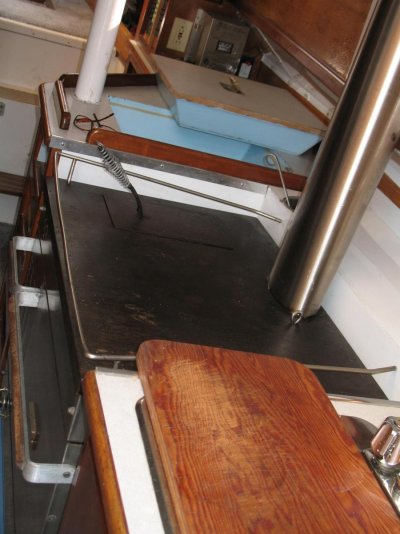Gulf Comanche
Guru
- Joined
- Dec 16, 2007
- Messages
- 1,045
- Location
- U.S.A.
- Vessel Name
- Old School
- Vessel Make
- 38' Trawler custom built by Hike Metal Products
Went out Saturday for a day trip. SO said it was cold and would I light the heater. I have a Dickinson Atlantic, followed the instructions, let about 2 tablespoons of diesel flow into the pot (the pot is what Dickinson calls the part of the stove where the burning sequence begins), then light it w/ a piece of paper. When the flame rises above the pot, turn the pump on and you're set to go. I did this and all looked good, so continued down the river, occasionally checking the stove. Second to last check and there was diesel on the floor, so turned off the pump thinking the pot had overflowed and would burn itself out with no more fuel coming in. Wrong, the last check showed the stove on fire inside and below the pot. Not good, and the stove was getting hotter by the minute. So, looked for the fire extinguisher that is 2 feet from the stove. I have looked at that thing going on 7 years, I didn't see it. Panic was taking its toll. So I ran up to the forward cabin, got that extinguisher, back to the galley and started squirting it into the fire. It would go out, then flash right back on with a big whomp. Keep squirting, stove keeps whomping back on fire. Fire extinguisher goes empty and still have a fire. Look for the one in the galley that I couldn't find, and there it is, 2 feet from the stove and right where its been since I bought the boat. Start squirting the fire again, and about halfway thru the contents of 2nd extinguisher the fire goes out for good. It finally cooled down enough to stop the diesel from flashing off.
By this this time the entire boat was filled with smoke and white powder, stem to stern. I asked the SO if she wanted to continue the ride, she said turn this thing around and head for the slip as we had many hours of cleaning up the white dust and carbon filaments that were everywhere.
So, what did I learn:
1. Keep it calm and know where things are.
2. Make sure the extinguishers are up to date. I got lucky as I had no clue and had never checked whether they were up to date or not or whether they would work when needed.
3. Get rid of the stove and buy a diesel heater. I never have liked that thing, it's big enough for a 75' tug and crew of 5, plus being about 25 years old. Our winters just aren't that bad.
Whew, close call.
By this this time the entire boat was filled with smoke and white powder, stem to stern. I asked the SO if she wanted to continue the ride, she said turn this thing around and head for the slip as we had many hours of cleaning up the white dust and carbon filaments that were everywhere.
So, what did I learn:
1. Keep it calm and know where things are.
2. Make sure the extinguishers are up to date. I got lucky as I had no clue and had never checked whether they were up to date or not or whether they would work when needed.
3. Get rid of the stove and buy a diesel heater. I never have liked that thing, it's big enough for a 75' tug and crew of 5, plus being about 25 years old. Our winters just aren't that bad.
Whew, close call.



